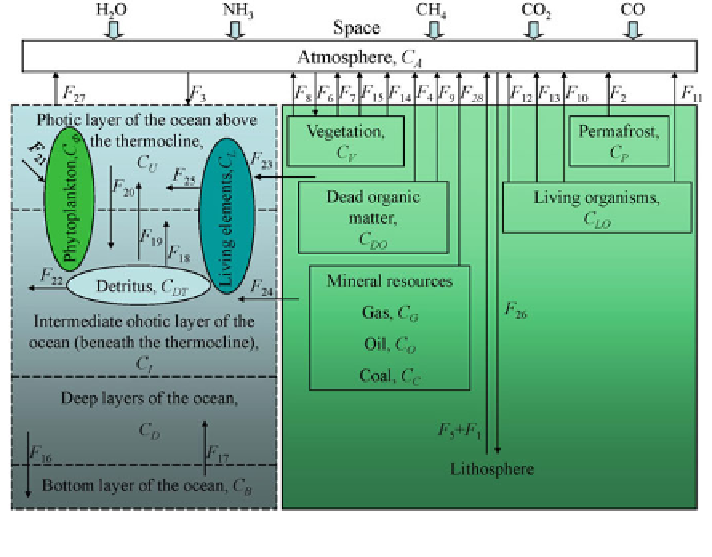Geoscience Reference
In-Depth Information
layers. The atmospheric CO
2
will decrease at the same rate as the contribution of
the oceans increases.
The entire area of the Arctic Ocean is only 3.8 % of the world
is ocean surface
but its role in the carbon dioxide absorption varies from 23 to 38 % (16.7
'
-
28.9 GtC year
−
1
). This role is greatly in
uenced by seasonal variations in the ice
cover and in the ecosystem productivity. That is why the results of this study have a
preliminary character. It is necessary to continue the closer de
fl
nition of the para-
understand that policy-oriented computer tools aimed at supporting decision
making processes related to global change, require the design of a new method-
ology in global modeling, based on simulation models with detailed spatial
descriptions of the biosphere systems and with operative informational service
de
metrical descriptions of
fl
ning the parameters.
It is clear that the Arctic Basin role in climate change is more complex than was
represented. There exist many informational uncertainties related to the permafrost,
methane emissions to the atmosphere. Further development of global information-
modeling system lies in the modernization of the GSM by means of detailed
elaboration of its blocks especially that parameterize the cycles of greenhouse
gases. As example, Figs.
6.27
and
6.28
represent more detailed schemes for bio-
geochemical cycles of CO
2
and CH
4
.
Fig. 6.27 A block-scheme of the global carboncycle model (GCCM) in the atmosphere-ocean-
land system. The CO
2
reservoirs and
fl
fluxes are listed in Table
6.24

Search WWH ::

Custom Search